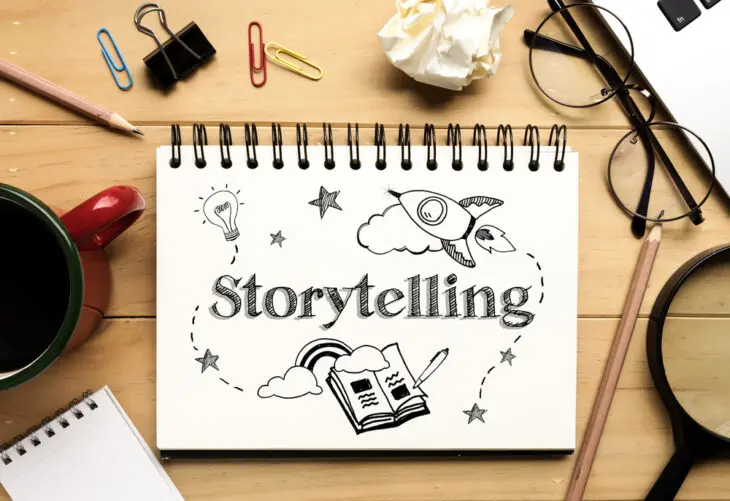
Facts inform, but stories inspire. While data and statistics form the backbone of credible writing, storytelling transforms dry information into memorable, engaging content. Whether you’re crafting an investigative article, writing an ebook, or writing memoir, mastering narrative techniques ensures your message resonates deeply. This guide explores how to weave storytelling into factual content, bridging logic and emotion to captivate readers.
1. The Science Behind Compelling Storytelling
Why Stories Stick
Neurological research reveals that stories activate multiple brain regions, including those responsible for sensory experiences and emotional processing. When facts are embedded in narratives:
- Retention increases by up to 22% compared to standalone data
- Empathy circuits engage, fostering reader connection
- Dopamine releases during climactic moments, enhancing recall
The “Hero’s Journey” Framework
Adapt Joseph Campbell’s classic structure for factual writing:
- Challenge: Present the problem your data addresses
- Quest: Detail the research or discovery process
- Resolution: Reveal outcomes and implications
2. Crafting Narratives in Article Writing
Structuring a Fact-Based Story Arc
Hook: Start with an anecdote or surprising statistic
Example: “Every 37 seconds, someone dies from cardiovascular disease—a crisis hiding in plain sight.”
Contextualize: Explain why the facts matter
Humanize: Introduce real-world examples or case studies
Climax: Present key findings or turning points
Resolution: Offer actionable insights or calls to change
Balancing Data and Drama
Use the “1:3 Rule”: For every data point, include three narrative elements (quotes, metaphors, scenarios)
Employ sensory language: “The algorithm’s hum echoed through lab corridors” vs. “The algorithm was developed”
3. Storytelling Techniques for Ebook Writing
Chapter-Level Narrative Design
When writing an ebook, structure each chapter as a self-contained story:
- Opening: Pose a question or paradox
- Development: Present conflicting data or historical context
- Climax: Reveal research breakthroughs
- Conclusion: Link to next chapter’s theme
Character-Driven Non-Fiction
- Case Study Approach: Follow a subject’s journey through the ebook’s topic
- Expert as Guide: Position thought leaders as mentors within the narrative
4. Weaving Personal Narratives in Memoir Writing
Factual Authenticity vs. Emotional Truth
Writing memoir requires balancing verifiable events with subjective experience:
- Anchor memories with dates, locations, and historical context
- Use dialogue reconstruction: “Mother’s hands trembled as she said, ‘We can’t go back’” (based on verified events)
- Employ thematic motifs: Recurring symbols (e.g., a clock, a scent) to tie facts to emotions
The “Nested Story” Technique
Place personal stories within larger socio-historical contexts:
- Micro: Your experience during the 2008 recession
- Macro: Global unemployment statistics from that period
- Bridge: “While I rationed groceries, 8.8 million jobs vanished worldwide.”
5. Common Pitfalls to Avoid
Over-Dramatization
Misstep: Exaggerating data for emotional effect (“A tsunami of layoffs” when 5% staff reduction occurred)
Solution: Use proportional metaphors (“A steady drip of pink slips”)
Losing Factual Integrity
Misstep: Altering chronology to enhance narrative flow
Solution: Use clear time markers (“Three months earlier, before the policy change…”)
Flat Characterizations
Misstep: Reducing complex subjects to stereotypes (“The stubborn CEO”)
Solution: Show motivations through verified quotes or documented decisions
6. Tools for Blending Story and Substance
The “Story Spine” Method
Developed by playwright Kenn Adams, this framework structures factual content:
- Once upon a time… (Context)
- Every day… (Baseline data)
- But one day… (Key finding/event)
- Because of that… (Implications)
- Until finally… (Conclusion)
Visual Story Mapping
Create a dual-axis outline:
- X-Axis: Chronological facts/data points
- Y-Axis: Emotional arc (tension, relief, curiosity)
The Alchemy of Facts and Narrative
Mastering storytelling in factual writing—whether article writing, writing an ebook, or writing memoir—requires both art and discipline. By grounding narratives in verifiable truths and elevating data through human experiences, writers transform information into impact. As you hone this balance, remember Pulitzer winner Jon Franklin’s axiom: “A story consists of a sequence of actions that occur when a sympathetic character encounters a complicating situation and struggles to resolve it.” Let your facts be the compass, and your stories the journey.





